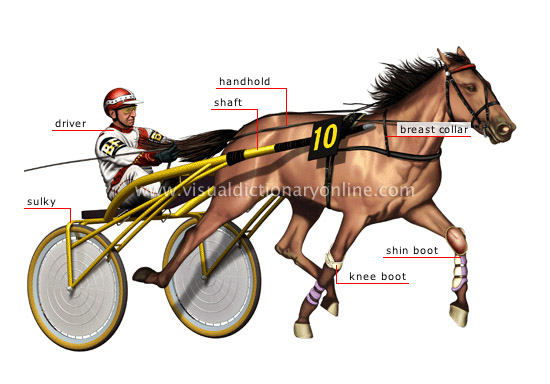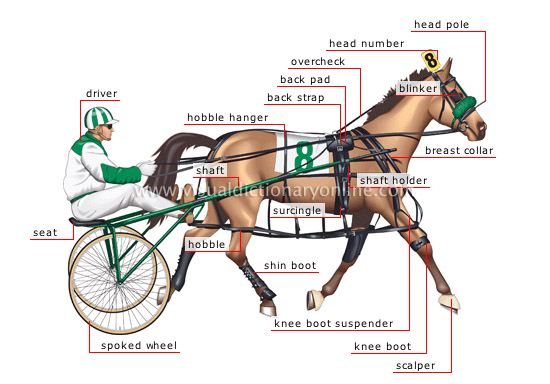You can bet on harness races from your home computer, mobile or tablet. Get up to an 10% horse betting rebate and there is a $150 Bonus for new members. Join Today!
Harness racing is a form of horse racing whereby the horses race at a specific trot or pace also known as a gait. They usually pull a two-wheeled cart called a sulky.


A trotter moves its legs forward in diagonal pairs (right front and left hind, then left front and right hind striking the ground simultaneously), whereas a pacer moves its legs laterally (right front and right hind together, then left front and left hind).
Pacing


Pacing races constitute about 85% of the harness races conducted in North America. Pacing horses are faster and less likely to break stride. A horse which starts to gallop must be slowed down and taken to the outside until it resumes trotting or pacing.
Images provided by Merriam-Webster
Pacers are less likely to break stride as they often wear hobbles (a hobble is a strap connecting the legs on each of the horse's sides). The pace is a natural gait for many horses, and hobbles are an aid in supporting the gait at top speed; trotting hobbles (a different design, due to the difference in the gait) are becoming increasingly popular for the same reason.
The majority of harness races start from behind a motorized starting gate. The horses line up behind a slow-moving, hinged gate that leads them to the starting line. At the line, the wings of the gate are folded up and the vehicle accelerates away from the horses.
An alternative starting method is the standing start, where there are tapes or imaginary lines across the track behind which the horses either stand stationary or trot in circles in pairs in a specific pattern to hit the starting line as a group. This enables handicaps to be placed on horses (according to class) with several tapes, usually with 10 or 20 meters between tapes. Many European – and some Australian and New Zealand – races use a standing start.
The sulky (informally known as a "bike") is a light, two-wheeled cart equipped with bicycle wheels. The driver, not a jockey, carries a light whip chiefly used to signal the horse by tapping and to make noise by striking the sulky shaft.























